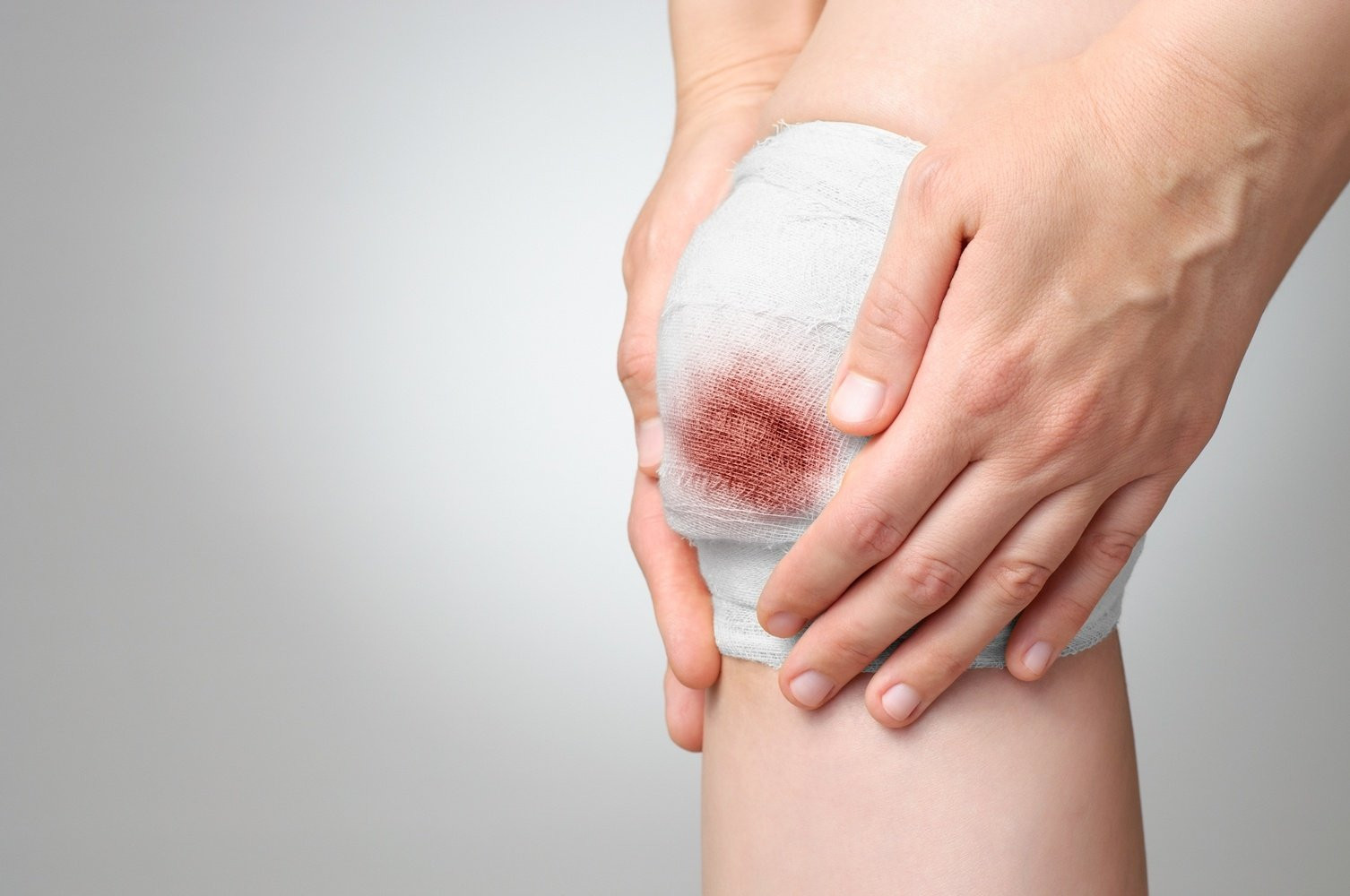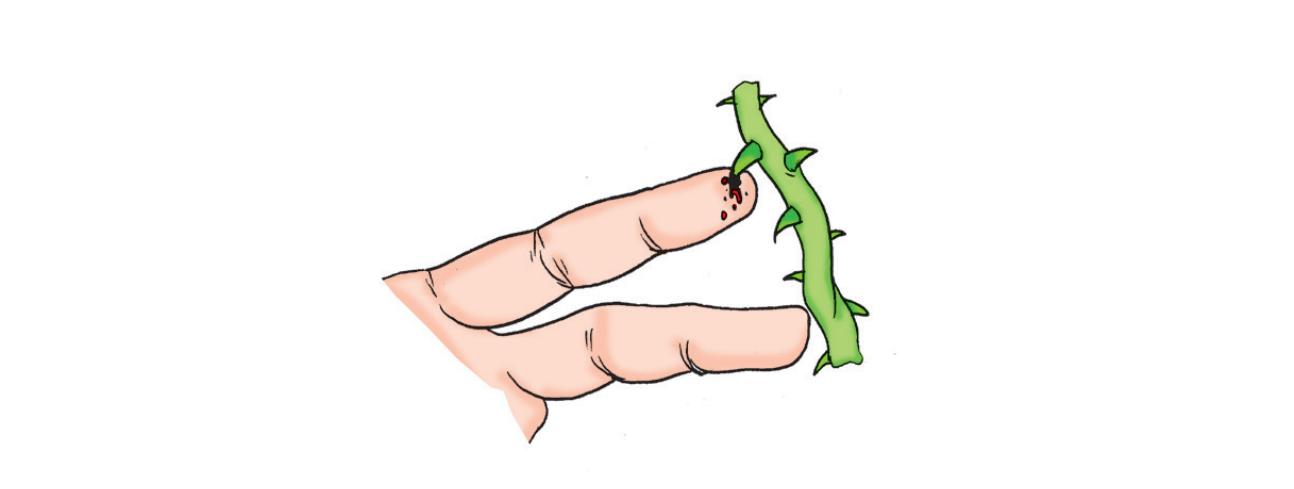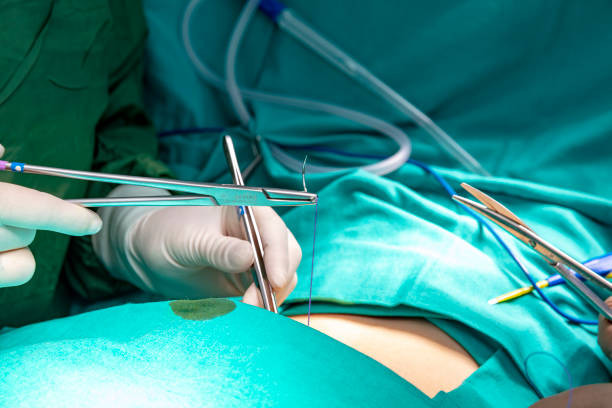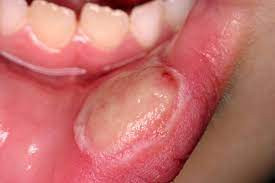Definition
Wounds, or injuries to the integrity of the skin, mucous membranes, or other body tissues, can extend to deeper structures. The damage can even reach internal organs. They can be categorized as open wounds, where the skin is damaged and underlying tissues are exposed, or closed wounds, where the damage occurs beneath intact skin.
Nearly everyone will experience a wound at some point in their life, but the severity can vary widely based on the type and extent of the injury.
Causes
Wounds are commonly caused by falls, accidents involving sharp objects, and traffic incidents. Wounds can be classified based on cause, mechanism, and characteristics:
- Incised wound. This type of wound is caused by sharp objects that result in a clean cut through the skin. While the damage to surrounding tissues may be minimal, these wounds can penetrate deeper into internal tissues or organs. Severe bleeding may occur, especially if blood vessels or nerves are affected.
- Puncture wound. Puncture wounds are caused by long, slender, sharp objects, such as needles or nails. These wounds are typically small in diameter but can be deep. Although pain and bleeding may be mild, there is a risk of bruising and internal damage, including to blood vessels, nerves, and organs. Complications, such as infection, can be serious.
- Slash wound. Caused by large, sharp objects, slash wounds combine the characteristics of incised wounds and bruises. They often involve damage to internal organs and bones.
- Bite wound. Animal or human bites cause these wounds, which have a higher risk of infection than other types of wounds. The area of damage may be small, but there is a significant risk of infection, especially if the bite is from an animal carrying toxins, such as a snake. Bite wounds can also be contaminated with bacteria that cause tetanus.
- Gunshot wound. Unlike other wounds, gunshot wounds are characterized by the high speed of the bullet, resulting in significant tissue damage. The sharp nature of bullets allows them to penetrate tissues easily, but as they lose stability, they can cause extensive damage by transmitting energy to the surrounding tissues.
- Contusion. Contusions, or bruises, are caused by blunt objects. The injury typically affects deep soft tissue or organs before impacting the skin. The area around the wound may exhibit a wide zone of damage, consisting of pooled blood and inflammatory cells. Bruises are painful, but external bleeding is rare.
- Abrasions. Abrasions occur when the skin is scraped against a rough or hard surface, such as a road. Although these wounds usually cause minimal bleeding, they must be cleaned thoroughly to prevent infection.
- Laceration. Lacerations are caused by blunt objects striking the skin at an acute angle, resulting in a tear. Broken bone fragments can also cause this type of wound.
- Crush Injury. Crush injuries share similarities with contusions and lacerations but involve more extensive damage. While the skin may remain intact, the injury can cover a wide area, making healing more challenging and increasing the risk of infection.
- Mixed Wound. This category includes wounds that exhibit characteristics of two or more of the previously described types.
Risk factor
People can experience wounds, but there are certain groups at higher risk of wounds, including children, the elderly, alcoholics, drug addicts, individuals with mental disorders, and people with disabilities. Additionally, those living in hazardous environments or working in high-risk occupations are more susceptible to injuries.
Symptoms
The primary symptoms of wounds include pain, swelling, bleeding, and impaired function in the affected body area. The severity of these symptoms can vary depending on the wound's location and type; some wounds may exhibit more intense pain, swelling, and bleeding than others. In some cases, wounds may become infected, as indicated by increasing pain, redness, fever, and discharge from the wound.
In the case of closed wounds, such as bruises or crush injuries typically resulting from blunt trauma, the damaged tissue is not exposed, yet bleeding and damage to muscles, internal organs, and bones can still occur.
Diagnosis
When diagnosing wounds, doctors may inquire about the injury's history, including when it occurred, the cause of injury, and how it happened. They may also ask about your tetanus immunization status (DT, Td, TT, Tdap). Additionally, in cases of trauma, the doctor may examine other parts of the body for additional injuries, especially if the wound was caused by a fall. Certain conditions, such as the wound's location in areas typically covered by clothing or near the genitals, may raise suspicion of violence. The doctors will also assess the wound's location, shape, color, and size, as well as the presence of any foreign objects.
Management
Minor injuries such as cuts, scratches, bruises, and garukan are very common and usually do not require medical treatment. However, some wounds, including infectious wounds, require handling to maintain body function and prevent complications.
Light wounds can be treated at home with:
- First of all, wash and disinfect the wound to clean up all the dirt
- Make direct emphasis on the wound and height of the wound area to control bleeding and swelling
- Use a sanitary napkin or sterile verban to cover the wound. Very light wounds can heal without having to be covered with verban
- Keep the wound clean and dry for about a week
- Take a break
- Kompres is cold if there are bruises or swelling
- Don't pull the keropeng
- Use the SPF 30 sunscreen in the wound area while doing outdoor activities
You can consume the acetaminofen according to the dose listed on the packaging if there is pain. Avoid products that contain bleeding because it can prolong bleeding.
Meanwhile, medical treatment for wounds consists of wound care and medication. To treat wounds, doctors can use different techniques. In open wounds, after cleansing, you may be given anestheticine (to relieve pain) and then the wound can be covered with skin glue or stitches. You may also be given a tetanus shot if you have a stab wound. Depending on the location of the wound and the potential for infection, the doctor may not sew the wound, but will let it recover on its own.
Treatment therapy for wounds is antinyeri and antibiotics if there is an infection or a high risk for infection.
Complications
The most common complication of wounds is infection. If the infected wound is not diagnosed and treated promptly, it can lead to:
- Cellulitis, a bacterial infection of the skin.
- Osteomyelitis, the spread of infection to underlying tissue and bone.
- Sepsis, the spread of infection into the bloodstream, which is a serious condition that can lead to organ failure and death in severe cases.
During the wound healing process, other complications may arise, including:
- Eczema around the wound.
- Swelling.
- Bruising.
- Reopening of the wound.
- Wound maceration. This typically occurs when the skin remains moist for an extended period, slowing the healing process and making the skin more vulnerable to infection.
Prevention
Preventing wounds can be achieved by using appropriate personal protective equipment during activities such as exercise and work. Additionally, preventing falls, particularly in children and the elderly, can be accomplished by installing safety devices at home. For children, safety measures may include a gate near stairs to prevent access, while for the elderly, handrails and crutches can provide support. It is also essential to follow safety instructions and exercise caution in dangerous environments or when handling sharp objects.
When to see a Doctor?
Certain types of wounds require medical attention, including:
- Wounds resulting from significant injury or force.
- Wounds that continue to bleed despite applying pressure and elevating above the heart, or bleeding that persists for more than 20 minutes.
- Wounds that require stitches to close.
- Wounds caused by animal bites.
- Wounds that are difficult to clean.
- Stab wounds: even a small puncture wound necessitates visiting a healthcare facility to receive a tetanus shot if deemed necessary by the doctor.
Looking for more information about other diseases? Click here!
- dr Nadia Opmalina
Traumatology - Wounds. Slideshare.net. (2022). Retrieved 3 June 2022, from https://www.slideshare.net/E_neutron/traumatology-wounds.
Types of Wounds | Kindred Hospitals. Kindred. (2022). Retrieved 3 June 2022, from https://www.kindredhealthcare.com/our-services/ltac/conditions/wound-care.
Open Wound: Types, Treatments, and Complications. Healthline. (2022). Retrieved 3 June 2022, from https://www.healthline.com/health/open-wound#outlook.
Different Types of Wounds. Woundcarecenters.org. (2022). Retrieved 3 June 2022, from https://www.woundcarecenters.org/article/wound-basics/different-types-of-wounds.












